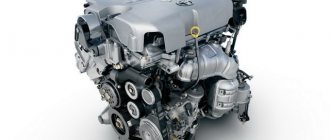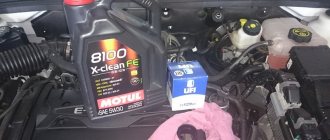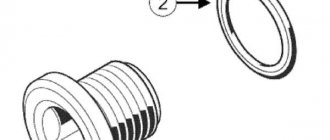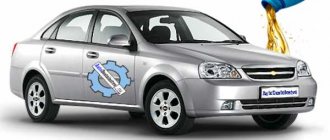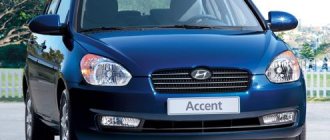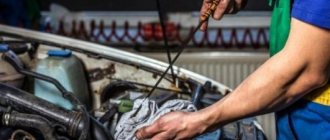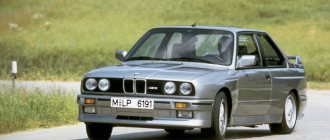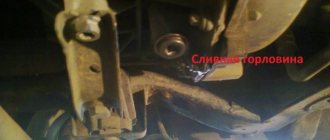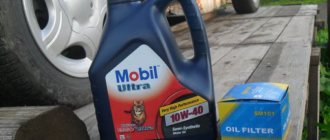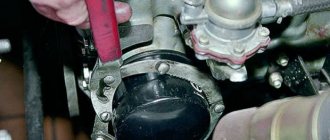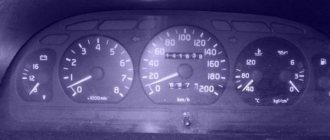Features of the Peugeot 406. The main advantages and advantages of the model
The model has a quite competitive arsenal of bodies - sedan, station wagon and coupe, the only thing missing is a convertible, but most representatives of the D segment have a similar “trio” of bodies. It is worth remembering that the 406ya starred in many roles as driver’s cars of movie protagonists, for example, in the film Ronin, and in the first three episodes of Taxi. It should also be remembered that the Peugeot 406 is unique in its own way, that is, it was developed at a time when there was no total “platform unification”, bringing driving performance to a common denominator, and they also made original, unique cars, unlike their classmates. That is, for example, the Ford Mondeo of the second generation, the Mazda 6 of the first and the Jaguar X-Type are one and the same, their designers only externally and “disunited” the interior in disguised “different” styles, and their modern colleagues are really lazy about this study! For the 406, the only thing that can be related to other French models is the entire range of engines. And the range of engines pleases with its diversity, and to compete with the “Japanese” and “Germans” the only thing missing was frankly extreme versions like V6 biturbo or V8 with a power of 300 horsepower.
Prices for Peugeot 406
Although the Peugeot 406 is already quite old, people continue to buy the model now, since in addition to the above advantages, it has one more plus. This is that in terms of the ratio of cost and consumer qualities, this Peugeot 406 in our market to this day remains one of the leaders in the D class, and not only sedans, but also station wagons and coupes. They charge moderate amounts for used cars. From 129,000 rubles (~3750) they ask for the Peugeot 406 of the earliest years of production and up to 380,000 (~11000) for the latest models with relatively low mileage, rich equipment and with the coolest and most powerful engines - 2.2 petrol engines (157-161 horsepower) ), 2.95-V6 (207-211 hp) and 2.2-liter turbodiesel (133-137 hp).
Operation of a Peugeot 406 with a diesel engine
The PSA alliance (that is, the community of Peugeot and Citroen) has always been famous for its diesel engines. The pre-restyling “four hundred and sixth” were equipped with modified and improved versions of the XUD series diesel engines and turbodiesels, well known since the distant seventies of the last century. They are known for their ultra-reliability and high-torque performance. For Peugeot 406, they were available in versions with 1.9-, 2- and 2.1-liter volume (power 76-111 hp and thrust 136-250 Nm). All had an eight-valve configuration. And during the first restyling, that is, starting in 1999, they passed the baton to the new generation of DW turbodiesels, which have many advantages - they became even quieter, more powerful and economical. They have two volume options - two and 2.2 liters (power 90-137 hp and thrust 205-314 Nm). The new diesel engines, unlike the old versions, all had turbocharging with direct fuel injection and sixteen valves. In addition to the above advantages, it has one more, which, however, in our frosts turns into a minus! This is their efficiency, it is so high that in frosty winters the heat that enters the cooling system is not enough to heat the cabin, unlike early diesel engines. For this reason, the HDi version of the Peugeot 406 was equipped with an additional electric heater with a second battery.
When purchasing, you should pay attention to any diesel version of Peugeot. By the way, everything is OK with the reliability, safety margin and service life of (turbo) diesel engines: no specific problems were noticed with the Peugeot 406 diesel engine, and the mileage before overhaul is generally pleasing - it is more than 400,000 km!
Fuse box in the cabin
To access, turn the corresponding screws and, if there is a lever, pull it.
You can see how to get to this block, and at the same time to the relay, in the video.
Option 1
Scheme
Designation
| 1 | 20/30A Cigarette lighter |
| 1A | |
| 2 | 10A Radiator fluid level sensor, water in fuel filter sensor (diesel engine), power supply for after-start circuit, instrument panel, on-board computer, electronic anti-theft system, power steering, electronic control unit (ECU) for preheating catalytic converter, interface speed control unit |
| 3 | 10A ECU and switch for electronic suspension control |
| 4 | 5A Front left, rear right side lights |
| 5 | 10A Headlight control, headlight washers, low beam indicator light on the instrument panel, right side lights |
| 6 | 15A Automatic transmission ECU, gear sensor |
| 7 | 20A Trailer wiring |
| 8 | — |
| 9 | 5A Front right, rear left side lights, audible reminder for forgotten lights on |
| 10 | 30A Seat Position Memory Power Circuit |
| 11 | 30A Front left seat |
| 12 | 15A Reversing light, air conditioning, hazard warning ECU, siren, brake lights, power door lock relay |
| 13 | 30A Front right seat |
| 14 | 30A Rear window regulator |
| 15 | 20A Central locking ECU, radio memory, fan relay, dual Bitron relay, seat memory ECU, anti-theft alarm ECU, anti-theft alarm relay power supply circuit, infrared and radio remote control units |
| 16 | |
| 16A | 10A Radio |
| 17 | |
| 18 | 5A Rear fog lamp |
| 19 | 5A Illumination of interior lighting switches, control panel illumination, instrument panel and rheostat |
| 20 | 10A Left low beam headlight |
| 21 | 10A Compressor cut-out relay, compressor, pressure switch, daytime running lights, maximum fan speed relay, air conditioning control, cabin temperature sensor |
| 22 | 20A Rear window wiper |
| 23 | |
| 24 | 30A Windshield Wiper Control, Windshield Wiper Motor, Windshield Wiper Timer, Rear Window Defogger Timer, Cruise Control Switch-Brake Pedal Off Switch |
| 25 | 10A Automatic transmission ECU, gear sensor, clock, trip computer, electronic anti-theft system, engine management, lamps, volumetric switch and anti-theft warning light |
| 26 | 15A Hazard switch |
| 27 | 30A Front door power window |
| 28 | 10A Instrument panel, digital clock, rear view mirror adjustment actuator, folding rear view mirror adjustment actuator, front door power window, seat memory ECU, full locking ECU, power window reset relay, sunroof, trip computer |
| 29 | 30A Electric glass lift, front door, sunroof |
| 30 | 15A Front and rear parking lights, glove compartment light, hazard warning switch, CD player, overspeed buzzer, power lock, vanity mirror light |
Fuse number 1 is responsible for the cigarette lighter.
Option 2
Scheme
Description
| 1 | Cord - Common for airbags |
| 2 | 5A Ventilation system control unit. |
| 3 | 10A Instrument panel. |
| 4 | 5A Signal + after ignition on for intelligent switch unit. |
| 5 | Not used. |
| 6 | 10A Steering column switches. |
| 7 | 15A Security alarm siren. |
| 8 | 10A Onboard navigation system. |
| 9 | 5A Signal + Battery for Intelligent Switch Box. |
| 10 | 15A Car radio. |
| 11 | 10A Third brake light. |
| 12 | 10A Right brake light. |
| 13 | 20A Driver's door power window. |
| 14 | 30A Power supply for rear power window. |
| 15 | + battery connector towing device. |
| 16 | 20A Memorizing seat adjustments. |
| 17 | 20A Electric passenger seat adjustment. |
| 18 | 10A Illumination of the cigarette lighter, display, illumination of switches, ashtray, automatic transmission selector. |
| 19 | 10A Rear fog lights. |
| 20 | 10A Rear right and front left side lights. |
| 21 | 10A Rear left and front right side lights. |
| 22 | 10A Glove box lighting, local lighting, cosmetic mirror, front and rear lamps, power window control panel lighting, interior self-dimming rear view mirror. |
| 23 | 20A Cigarette lighter. |
| 24 | Not used |
| 25 | 20A Car radio. |
| 26 | Not used |
| 27 | 5A Rear power windows relay. |
| 28 | 15A Electric seat heaters. |
| R | 5A Spare fuse. |
| R2 | 10A Spare fuse. |
| R3 | 30A Spare fuse. |
| R4 | 20A Spare fuse. |
| R5 | 15A Spare fuse. |
Option 3
Scheme
Decoding
| F1 | Shunt | Seat belt tensioner, airbags |
| F2 | 5A | Air thermistor, ventilation control system |
| F3 | 10A | Stop lights. clutch pedal, instrument panel, cruise control system, passenger airbag deactivation |
| F4 | 5A | ignition switch for built-in diagnostic system |
| F5 | — | Spare |
| F6 | 10A | The engine control unit |
| F7 | 15A | Anti-theft alarm |
| F8 | 10A | Display, interior lighting, seat memory, satellite navigation, luggage compartment lamp, anti-theft alarm LED |
| F9 | 5A | (+) battery for built-in diagnostic system |
| F10 | 15A | Car radio |
| F11 | 10A | Left brake light, high brake light |
| F12 | 10A | Right brake light |
| F13 | 20A | Driver's door power window |
| F14 | Z0A | Power windows for rear doors |
| F15 | — | (+) battery for trailer connector |
| F16 | 20A | Electric drive and driver's seat memory |
| F17 | 20A | Electric driver's seat |
| F18 | 10A | Light switch |
| F19 | 10A | Rear fog lights |
| F20 | — | Spare |
| F21 | — | Spare |
| F22 | 10A | Interior lighting, rain sensor, seat memory |
| F23 | 20A | Peugeot 406 cigarette lighter fuse |
| F24 | — | Spare |
| F25 | 20A | Front and rear wipers/washers |
| F26 | — | Spare |
| F27 | 5A | (+) ignition switch for built-in diagnostic system |
| F28 | — | Spare |
| F29 | 10A | Left high beam |
| F30 | 10A | Right high beam, high beam warning lamp |
| F31 | 10A | Low beam left headlight |
| F32 | 10A | Low beam right headlight, low beam warning lamp |
| F33 | — | Spare |
| F34 | 10A | Front left and rear right side lights |
| F35 | 10A | Front right and rear left side lights, license plate lights, cruise control system |
| F36 | — | Spare |
| F37 | — | Spare |
| F38 | — | Spare |
| F39 | — | Spare |
| F40 | 40A | Fan |
In this version, fuse number 23 at 20A is responsible for the cigarette lighter.
Peugeot 406 petrol engines
They, despite the frankly sporting abilities of the car, are just good, but nothing more. As a result, of all gasoline engines, only the eight-valve 2-liter turbo, 2.2-liter, 2.95 V6 and the most powerful 2.2-liter turbodiesel correspond to the sporty image of the model. They have a lot in common, such as the fact that they are noisy and don't care about fuel economy. In Russia, the most popular were four-cylinder “in-line” engines with 1.8- and 2.0-liter volumes (they ranked first in sales). 1.8-liter engines had two versions - the XU series of cars produced until the end of 2000 could have two versions - 90-horsepower with eight valves or sixteen with a power of 101-111 hp.
Reviews from Peugeot 406 petrol engines
The most interesting thing is that the “eight-valve” engines, although less revving, giving way to 1000 rpm, are clearly more torquey, and not only on paper - 147 Nm versus 142 for the 101-horsepower version! As a result, it is easier to start with them and it is easier to accelerate in higher gears. For example, the 1.6 liter younger brother with eight valves for other models behaves exactly the same way - although there are only 88 horsepower here, but, for example, on the lighter previous 405m it was possible to take off from second gear! Only after the second restyling, the new engine with an “incomplete” 1.8 liter capacity (that is, 1749 cm3) became both more powerful and torquey - 116-118 forces and 160 Nm. True, the fault in the failure of sixteen-valve engines is not only in the lower torque value, and not even in the fact that it is shifted towards higher speeds, but largely in the unsuccessful selection of gearbox ratios, so all this together hides the advantages. And yet, they are noisier, but you can forgive them, since they are more powerful and good at the “tops”.
But in any case, the 1.8-liter Peugeot 406, even after factory tuning, is a car for a phlegmatic, measured driving style. The same cannot be said about the two-liter four-hundred-sixth engines - they are enough for both city driving with confident starting, and for active acceleration. And all of them already had only a sixteen-valve configuration: until the end of 1999, the good old XU10J4R units were installed on the 406e. In the same year, after restyling, the French switched to 1.75-liter engines of the new EW series. Before the advent of 2.2 liter petrol engines, in the hierarchy of coolness after the V6 there were eight-valve two-liter turbo engines with 147-151 horsepower, which were not officially installed on the “Russian” Peugeot 406, and they are rare in the West. In practice, this also applies to 207-211 horsepower V6 engines and the later more powerful 2.2-liter “fours” (157-161 horsepower) with balancer shafts; they are only slightly more common in turbo engines! By the way, the last engine is one of the best and most successful PSA engines in the range and is perfect for the 406. But, as mentioned above, we practically never come across such cars. True, as an option, you can look inexpensively in the West for a used 2.2-liter Peugeot 406, so you can’t go wrong. The engine is quite powerful and torquey, almost at the level of a V6 of those times with a volume of 2.2-2.4 liters. For example, like a 2.2 liter 320, Audi A4 2.4, Mazda Xedos6 2.3, etc.
ACEA
In the standard distribution of the organization, it is optimal to use oil of category C2 in the Peugeot 2008. Such mixtures are adapted to work with highly accelerated engines, particulate filters, and catalytic converters. Lubricants are distinguished by their minimal coefficient of friction and the possibility of additional fuel savings. Separately mentioned is resistance to mechanical destruction.
It is allowed to use class A3/B3 formulas. This product category helps reduce fuel consumption. Also compatible with modern internal combustion engine designs.
Problems and disadvantages of the Peugeot 406 gasoline engine
Gasoline engines are doing very well in terms of reliability. If you monitor them and do all the procedures on time, then they “walk” for a long time. And so, in more detail - it is necessary to change the belt on time (it is toothed), and in Russian conditions it is better to “disobey” Peugeot’s recommendations and do this not every 120 thousand km, but exactly twice as often, that is, every 60 thousand km . Do not forget that the coolant needs to be periodically replaced in order to protect the light-alloy cylinder block from corrosion, and then everything will be OK. Just don’t force yourself into deep puddles at good speed, at speed. Although the “Russian” Peugeots had a higher ground clearance and a stronger suspension, the point is not that, but the fact that the air filter’s suction pipe is located very low, on the left side, under the headlight. And water, which can easily get into the cylinders through the intake tract, promises water hammer, which in the best case scenario will result in bent connecting rods. By the way, some services and workshops are ready to take on a simple modification and move the pipe higher.
Specific problems and sores of 4-cylinder engines 1.8 and 2.0
Gasoline four-cylinder engines also have several of their own specific problems. The first is that in the Russian cold, some engines start only on the second or third attempt, and at temperatures below -18-20°C they stop starting altogether. This happens most often with motors of the new EW series. Peugeot is aware of this problem and is trying to eliminate it - mainly by improving the “brains” program for controlling the power and ignition systems. New software “updates and upgrades” can be downloaded and installed into the on-board processor when visiting a service center on most cars with EW series engines.
Further, another set of troubles is also associated with the control electronics. On all modern Peugeot 406 gasoline engines, it is capable of quite accurately monitoring the ignition timing depending on factors such as the frequency and strength of detonation and promptly adjusting, making it possible for most engines to use AI-92 gasoline. In fact, as practice and reviews from Peugeot 406 owners show, engines of the more recent EW generation, which were “programmed” to meet more stringent toxicity standards, adapt much less well to changes in the octane number in gasoline. Detonation, malfunctions and misfires, which are not such a rare occurrence when working on Russian fuel, are perceived by electronics as errors and any unnecessary information in connection with this “accumulates” in their memory. And as a result, the engines suddenly begin to “go wild” and lose idle speed, throttle response and power drop, etc. In such cases, a simple action from the world of computer scientists will help - this is something similar to resetting the well-known “BIOS”, that is, you can remove the “negative” terminal of the battery for five to ten minutes and reset, “zero out” the entire register of errors that have accumulated. This will return the engine to normal operation for a shorter period of time and make it more responsive. However, once again, only “downloading and installing” an updated version of the control “software” can help dramatically.
Problems with EW engines
Another bug that many owners of cars with EW series engines note is increased engine oil consumption. For what reasons this happens is not yet known to us. So far, one guess that seems to be true is that most likely it is due to the design of the piston rings. It is likely that oil loss is also affected by the deformation of the cylinders during heating and under load. The “experimental”, that is, the editorial Peugeot 406 Autoreview with the “two-liter” of the first XU series, also could not avoid a similar fate. As a result, oil consumption, when the car was still completely new, could reach up to 250 grams for every 1000 km! Indeed, in accordance with Peugeot's instructions, oil consumption of up to 500 g per 1000 km is not covered by the warranty, since it is not considered a malfunction. Although, such ultra-high “standards” of waste consumption are also practiced by many other European companies - in case of prolonged engine operation at high speeds. However, Peugeots with gasoline engines, alas, are not so rarely distinguished by such a large “oil appetite” when operating in the most ordinary, far from extreme modes...
Characteristics of oil fluids
Knowing what kind of oil is poured into Peugeot 308, 406, etc., you need to know the properties of the recommended fluids.
- Total Quartz Ineo First 0W-30 is a synthetic motor oil approved by both the French automaker and. The fluid offers best-in-class protection against wear and deposits, as well as correct and long-lasting operation of exhaust aftertreatment systems. Shows excellent results together with hybrid installations and e-HDI engines with a stop-start system. Suitable for fans of dynamic driving, movement on city roads and door-to-door trips.
- Total Quartz Ineo Ecs 5W-30 is a liquid with low sulfate zonation and low amounts of sulfur and phosphorus. This is an excellent option for those who do not know what oil to fill in Peugeot 307, 3008. It saves fuel and helps reduce emissions of particulate matter and carbon dioxide into the air. Due to the low phosphorus content, it activates the action of catalytic converters and optimally cleans the valves of the exhaust gas recirculation system.
- Total Quartz 9000 5W-40 is a high-quality universal synthetic fluid suitable for Peugeot gasoline and diesel power units. It is distinguished by excellent antioxidant properties and the possibility of year-round use. This product remains fluid even at low temperatures, which makes it easy to start the engine in extreme cold, and is recommended for cars driving around the city and on highways.
- Total Quartz 7000 10W-40 is produced on a synthetic basis and is compatible with engines with multi-valve systems and turbocharging that run on diesel, biodiesel and gasoline. This material is resistant to oxidation and has excellent lubricating properties at high temperatures, as well as easy “pumping” at low temperatures. Thus, engine protection is guaranteed at any temperature and the overall service life of the motor is increased.
You can purchase high-quality fluids for the “heart” of your car from our company. Our specialists will tell you what oil to fill in your Peugeot Partner (and other model from Peugeot), select the viscosity grade, and also, if you wish, make a replacement.
Peugeot 406 transmission operation
There shouldn't be any problems with all gearboxes. The very first pre-restyling models, until 1999, had rods in the drive of the manual transmission shift mechanism, then they were replaced by more reliable cables. The gearbox lever on the “mechanics” of the 406x has a long travel, but even in used cars of the earliest editions, the gears shift easily and clearly. It is very rare that early wear of the third gear synchronizer occurs, but the box is easily repaired, and in this case this problem can be eliminated without much difficulty.
Oil for manual transmission Peugeot 406
By the way, you should not ignore the company’s recommendation to fill in Total and Esso oils. At least, in laboratories and during testing at Total's benches, all lubricants are “customized” to the characteristics specifically for specific engines and transmissions of the PSA concern. For example, Total has developed transmission oils taking into account the peculiarities of the materials of Peugeot and Citroen gearbox synchronizers.
Transmission oil for Peugeot 406 automatic transmission
And for automatic transmissions that were installed on the Peugeot 406, the requirements for oils are even stricter, that is, they only need to be filled with special ATF LT71141 oil. Under no circumstances should you use conventional ATF oils such as Dextron, otherwise the transmission will fail! So if you have received a used Peugeot with an automatic transmission and you do not know or are not sure what kind of oil is poured into the transmission, then it is better to immediately change it to the necessary “correct” one. The oil is poured into the automatic transmission for its entire service life: its replacement is not provided at all.
- < Back
- Forward >
Generations 1 and 2 (since 1996)
Engine TU5JP4 1.6 (2003-2009)
- Oil types (by viscosity): 5W40
- How many liters of oil in the engine (total volume): 3.2 liters.
- When to change oil: 10000
Engine TU5JP4B 1.6 (2010-2013)
- What kind of engine oil is filled from the factory (original): Synthetic 5W30
- How many liters of oil in the engine (total volume): 3.25 liters.
- Oil consumption per 1000 km: up to 300 ml.
- When to change oil: 10000
Engine TU5JP4/L3 1.6 (2002)
- What kind of engine oil is filled from the factory (original): Synthetic 5W40
- Oil types (by viscosity): 5W-30, 5W-40, 10W-40
- Oil consumption per 1000 km: up to 300 ml.
- When to change oil: 10000
Engines TU32 / KFX(TU3JP) / KFW(TU3JP) (2008) 1.4
- What kind of engine oil is filled from the factory (original): Synthetic 5W40
- Oil types (by viscosity): 5W-30, 5W-40
- How many liters of oil in the engine (total volume): 3.5 liters.
- Oil consumption per 1000 km: up to 300 ml.
- When to change oil: 10000
Engine TU3JP 1.4 (1996-2007)
- What kind of engine oil is filled from the factory (original): Synthetic 5W40
- How many liters of oil in the engine (total volume): 3.5 liters. (1999-2001), 3.0 l.
- Oil consumption per 1000 km: up to 300 ml.
- When to change oil: 10000
Engine XUD7 1.8 (1996-1999)
- What kind of engine oil is filled from the factory (original): Semi-synthetic 15W40
- Oil types (by viscosity): 10W-40, 15W-40
- How many liters of oil in the engine (total volume): 4.25 liters.
- Oil consumption per 1000 km: up to 300 ml.
- When to change oil: 10000
Engines WJZ(DW8) / WJY(DW8B) 1.9 (2001-2007)
- What kind of engine oil is filled from the factory (original): Synthetic 5W40
- Oil types (by viscosity): 5W-40, 10W-40
- How many liters of oil in the engine (total volume): 4.5 liters.
- Oil consumption per 1000 km: up to 300 ml.
- When to change oil: 10000
Engine DW8 1.9 (1996-2005)
- What kind of engine oil is filled from the factory (original): Synthetic 5W40
- Oil types (by viscosity): 5W-40, 15W-40 (up to 2000)
- How many liters of oil in the engine (total volume): 4.25 liters. (up to 2000), 4.8 l.
- Oil consumption per 1000 km: up to 300 ml.
- When to change oil: 1000
Engine RHY(DW10TD) 2.0 (2006-2007)
- What kind of engine oil is filled from the factory (original): Synthetic 5W40
- Oil types (by viscosity): 5W-30, 5W-40
- Oil consumption per 1000 km: up to 300 ml.
- When to change oil: 10000
Engines DW10TD / DW10TD/L3 2.0 (2000-2005)
- What kind of engine oil is filled from the factory (original): Synthetic 5W40
- Oil types (by viscosity): 10W-40, 5W-40
- How many liters of oil are in the engine (total volume): 4.5 liters.
- Oil consumption per 1000 km: up to 300 ml.
- When to change oil: 10000
The French company Peugeot is one of the oldest car manufacturers in the world; the brand's first car with a steam engine was manufactured by Armand Peugeot and Leon Serpollet in 1889. Soon, engineers decided to replace the steam plant with a more efficient internal combustion engine. By the beginning of the 20th century, mass production of Peugeot cars was established, and the company became one of the main automobile enterprises in Europe. It has managed to remain among the leaders of the European automobile market to this day, including thanks to the purchase of Citroen and the formation of the PSA concern in 1975. In addition to Europe, the brand's cars were successfully sold in Africa, South America and Asian countries. Peugeot is also famous for winning the very first automobile race, held in 1894 along the Paris-Rouen route, as well as for further successful performances in rallies, rally raids and endurance racing.
What kind of oil to fill in a Peugeot depends on the model and modification of the car. The French automaker has been working closely with TOTAL since 1995 and recommends TOTAL lubricants for brand vehicles.
| Engine capacity | Model | Oil volume | TOTAL QUARTZ INEO FIRST 0W30 | QUARTZ INEO ECS 5W30 | TOTAL QUARTZ 9000 5W40 | TOTAL QUARTZ 7000 10W40 |
| 1.0L | 107 | 3 | + | + | + | + |
| 1.0 L and 1.2 L Vti | 208 | 3,25 | + | + | + | + |
| 1.4 L and 1.6 L Vti/THP | 207 / 208 / 308 / 3008 / 5008 / 508 / RCZ / Partner | 4,25 | + | + | ||
| 1.1 L i and 1.4 L i | 1007 / 206 / 206+ / 207 / 307 / Bipper / Partner | 3 | + * | + | + | + |
| 1.6 Li | 1007 / 206 / 307 / Partner | 3,25 | + * | + | + | + |
| 1.6 L e | 4008 | 4,2 | + | + | + | + |
| 1.8 Li | 407 | 5 | + | + | ||
| 2.0 Li | 206 / 307 / 407 / 807 / Expert | 5 | + | |||
| 2.0 L e | 4007 / 4008 | 4,3 | + | + | + | + |
| 2.2 Li | 407 / 607 / 807 | 4,25 | + | + | ||
| 2.4 L e | 4007 | 4,5 | + | + | + | + |
| 3.0 Li | 407 / 607 / 807 | 4,75 | + | + | + | |
| 1.3 L Hdi | Bipper | 3,2 | + | |||
| 1.4L and 1.6L Hdi no PF | 307 / 308 / 407 / Bipper / Partner / Expert | 3,75 | + | + | + | + |
| 1.4L and 1.6L Hdi PF | 1007 / 206 / 206+ / 207 / 208 / 307 / 308 / 3008 / 4008 / 5008 / 508 / 407 / Partner / Expert | 3,75 | + | + | ||
| 1.8L Hdi | 4008 | 5,3 | + | + | + | + |
| 1.9LD | 206 / Partner / Expert | 4,5 | + | + | + | |
| 2.0 L HDi no PF | 206 / 307 / 407 / 807 / Partner / Expert | 4,25 / 4,5 / 4,75/5,25 | + | + | + | |
| 2.0 L HDi PF | 307 / 308 / 3008 / 508 / 5008 / 407 / 807 / RCZ / Expert | 4,7 / 5 / 5,25 | + * | + | ||
| 2.2 L Hdi | 4007 | 5,25 | + | |||
| 2.2 L HDi PF | 407 / 607 / 807 / 508 | 5,25 | + * | + | ||
| 2.2L HDi Euro IV | Boxer | 6 | + | + | + | |
| 2.2L HDi Euro V | Boxer | 6,2 | + | |||
| 2.7L V6 Hdi | 407 / 607 | 5,5 | + | |||
| 3.0L V6 Hdi | 407 | 6,25 | + | + | ||
| 3.0L HDi Euro IV | Boxer | 8,6 | + | |||
| 3.0L HDi Euro V | Boxer | 9 | + |
* only for models released after 2011
The information in the table is provided for informational purposes: when selecting engine oil, you must rely on the recommendations of the car manufacturer.
